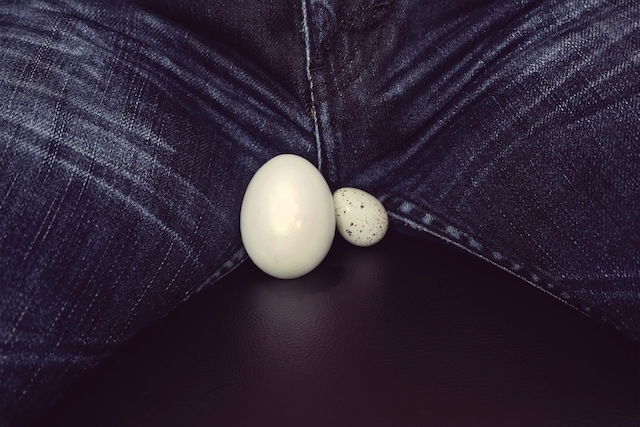Swollen testicles are usually a sign of health condition in the area, like an inguinal hernia, varicocele or epididymitis. Significant swelling can occur with testicular torsion and cancer, however.
Swelling in the testicles is often accompanied by pain, which can be constant, or with certain positions or movements, like sitting. This symptom can affect patients of any age.
You should consult a doctor if your pain does not resolve with simple interventions, like analgesics or cold compresses. You should seek urgent medical attention if the testicular swelling presents with fever, intolerable pain, and changes to skin color.

What causes testicular swelling?
Swollen testicles can occur as a result of:
1. Inguinal hernia
An inguinal hernia occurs when a portion of the intestines bulges through the abdominal muscles and into the scrotum. It causes significant swelling with mild and constant pain that does not go away. This pain usually worsens when getting up from a chair or bending forward. This problem is most common in children and young adults, however it can happen at any age.
Learn more about the symptoms of an inguinal hernia and what can cause them.
What to do: You are advised to see a doctor to evaluate the hernia and determine the need for surgical intervention. If you think you may have an inguinal hernia, you should proceed to a hospital for immediate assessment, as there is a risk for serious complications like infection and intestinal cell death.
2. Varicocele
A varicocele is associated with a dilation of one of the veins in the testicle, very similarly to what happens with varicose veins on the legs. It is one of the most frequent causes of infertility in men and is is most commonly seen in the left testicle. It usually does not cause any symptoms, although some men may report a slight discomfort or increased heat in the area.
What to do: Generally, treatment is not necessary. Severe pain can be assessed in a hospital setting and is usually treated with analgesics like acetaminophen. The doctor may recommend the use of special compression underwear to support the scrotum closer to the body, although some cases may require surgical repair.
3. Epididymitis
Epididymitis is an inflammation of the vas deferens, which are the small tubes that transport sperm from the testicles. Swelling of these tubes can cause a small lump at the top of the testicle. This inflammation generally occurs due to a bacterial infection transmitted from unprotected anal sex, although there are other causes. Symptoms include intense pain, fever and chills.
Learn more about what can cause a bump on the penis and what to do.
What to do: Epididymitis is treated with antibiotics, therefore it is important to see a doctor if you suspect an infection. The treatment usually involves an injection of ceftriaxone, followed by 10 days of oral antibiotics at home.
4. Orchitis
Orchitis is an inflammation of the testicles that can be triggered by a viral or bacterial infection. It is normally caused by mumps, but it can also appear with a bacterial UTI or STI (like gonorrhea or chlamydia). In these cases, men may also report fever, blood in the semen and pain with urination.
What to do: You should proceed to a hospital to start prompt treatment with antibiotics and/or anti-inflammatories. You can decrease discomfort in the meantime with cold compresses and rest.
5. Hydrocele
A hydrocele is characterized by the growth of a fluid-filled sac in the scrotum. It is more commonly seen in babies, but it can also occur in men with direct trauma to the testicles, testicular torsion or epididymitis.
What to do: Although most times hydroceles disappear within 6 to 12 months without any specific treatment, you should still proceed to a hospital for diagnosis and to rule out other more serious conditions.
6. Testicular torsion
Testicular torsion occurs when the mains vessel that supplies blood to the testicles becomes twisted, resulting in a medical emergency. It is more common between the ages of 10 to 25 years old and can cause swelling and intense testicular pain. In some cases, the torsion is just partial, which causes a more mild pain or pain just with movement of the body.
What to do: You should proceed immediately to the hospital for surgical treatment to prevent complications like infertility.
7. Testicular cancer
One of the first symptoms of testicular cancer is a bump on the testicle or a testicle that increases in size (which can look like swelling). In these cases, it is common not to experience pain, but to notice a change in shape or firmness in a testicle. Other factors that contribute to an increased risk for cancer are a positive family history and having HIV.
What to do: This cancer should be identified as early as possible to increase the chances of a cure. If you suspect you may have cancer, you should book a consult with a urologist for assessment, testing and diagnosis.
Read more about the symptoms of cancer that you should never ignore.
